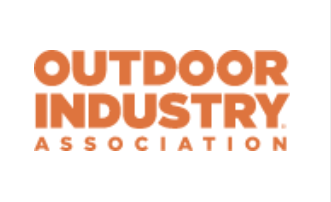The 2024 election resulted in a dynamic political landscape with significant policy implications for outdoor industry businesses, particularly in overseas manufacturing and exporting. During the Outdoor Industry Association (OIA)’s industry-wide webinar this December, OIA convened policy experts, government affairs representatives and attendees to share insights and answer questions about tariffs, trade policies and broader regulatory challenges under the new administration. Read on for key takeaways from the session and answers to some of the industry’s most pressing questions.
Key Takeaways
- The outdoor recreation industry contributes $1.2 trillion to U.S. GDP and supports over 5 million jobs, underscoring its importance as an economic driver.
- Early and consistent engagement with the new administration and 119th Congress is critical to ensure the industry’s voice is heard on issues like trade, public land management and sustainability.
- Businesses should prepare for potential new tariffs on China, Vietnam and Mexico, emphasizing the need for supply chain diversification and proactive communication with policymakers and consumers.
- Circularity, product durability and recyclable materials are becoming regulatory priorities, offering both challenges and opportunities for companies to innovate.
- Leveraging robust economic and sustainability data is essential for advancing policy goals and demonstrating the industry’s contributions.
Tariffs & Trade Policy
How soon could the administration implement tariffs on outdoor products?
The administration is expected to act quickly on tariffs, with announcements potentially coming as early as Inauguration Day. Tariffs targeting countries with significant trade deficits, such as China, Vietnam and Mexico, are anticipated. Businesses should be prepared for swift changes.
Should manufacturers move operations out of China?
While moving operations out of China may help mitigate risks, it’s important to avoid overreliance on a single alternative, such as Vietnam, which may also face tariffs. Companies are encouraged to adopt a diversified multicountry sourcing strategy and consider onshoring and nearshoring opportunities to reduce dependency on high-risk regions.
Mitigating Tariff Impacts
What can companies do to mitigate the impacts of increased tariffs?
Diversifying supply chains is critical. Businesses should explore sourcing alternatives, including domestic production. Additionally, clear communication with consumers about the impacts of tariffs — such as breaking down costs on receipts — can raise awareness and drive advocacy.
Will there be reforms to the 321 Program?
Changes to the de minimis program under Section 321 are likely, with restrictions expected on categories like apparel and footwear. Companies should monitor legislative developments to adapt their strategies accordingly.
Advocacy & Engagement
How can companies advocate for their policy priorities and when should they engage with the new administration?
Early engagement is essential. Advocacy efforts should begin as soon as the administration and Congress take office, emphasizing the industry’s economic contributions and the impacts of proposed policies. Coordinated campaigns, like participation in OIA’s Capitol Summit, are effective in amplifying these efforts.
Will there be opportunities for coordinated advocacy efforts?
Yes, coordinated advocacy initiatives, such as Capitol Summit and coalition campaigns, will provide platforms for engaging policymakers. Businesses are encouraged to join these efforts to ensure their voices are heard. OIA said it is here to facilitate any advocacy efforts that its members are interested in.
Broader Sustainability & Regulatory Trends
Do you see a shift in how retailers approach sustainability and climate goals?
Retailers were the among the first to incentivize sustainable practices, such as circularity, setting targets for emissions and reduced packaging, from their supplying brands. After the election, there has been no indication that outdoor retailers will de-emphasize their sustainability and climate goals. They are committed to science-based targets and still have to comply with European regulations.
What trends in sustainability should companies prepare for?
Regulatory focus is shifting toward circularity, with initiatives like California’s textile circularity laws paving the way. Businesses should prepare to align with sustainability goals through durable, repairable and recyclable product designs. European regulation if often reflected in emerging state regulations, so supply chain traceability and data transparency could also be on the horizon.
Looking Ahead
The post-election environment presents both challenges and opportunities for businesses. Tariffs, trade policies and sustainability regulations will require strategic planning and advocacy. By staying informed and engaged, companies can navigate these changes effectively, ensuring resilience and long-term success.
OIA’s full webinar recording can be viewed here.
